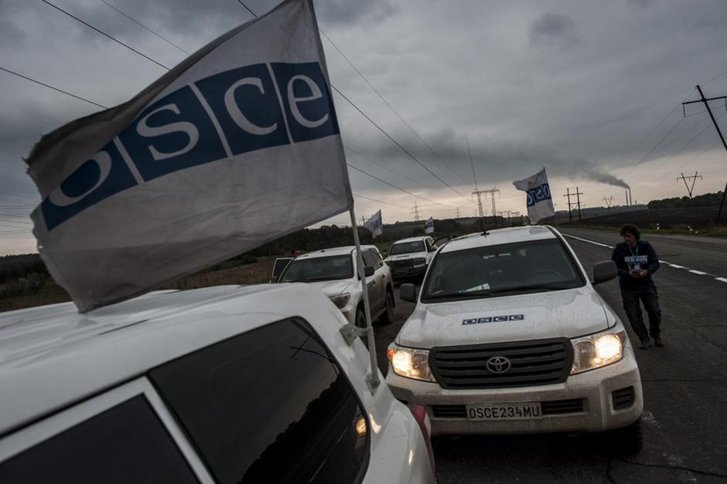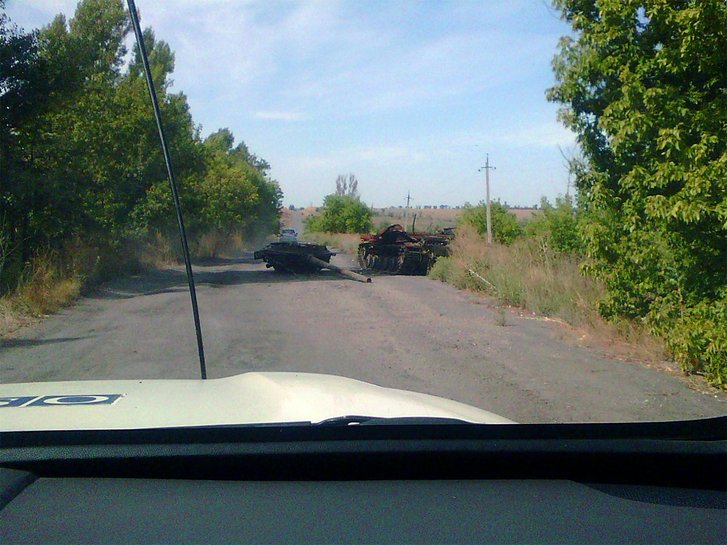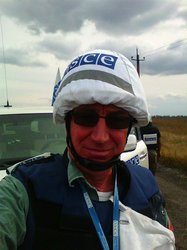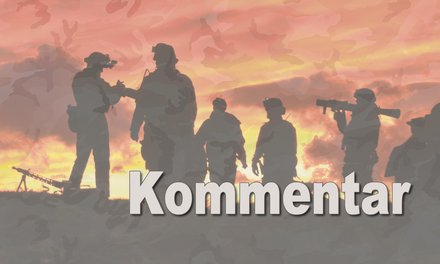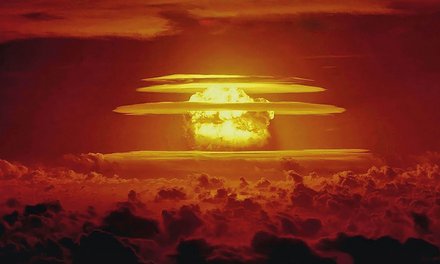- Veröffentlichungsdatum : 27.08.2019
- – Letztes Update : 03.09.2019
- 12 Min -
- 2433 Wörter
- - 7 Bilder
At the contact line in Eastern Ukraine

Warm up in Donetsk
“Reading OSCE reports about kinetic incidents sitting comfortable in an office at the Operational Planning Division of the Ministry of Defense and Sports in Vienna is one thing; standing here now as an OSCE Special Monitoring Mission to Ukraine (SMMU) monitor on the top of the destroyed railway station in Donetsk is another one”, comes through my mind.
It is late May 2016. We, an OSCE monitor from the old crew and I, the “newcomer”, have the “roof shift” at the top of the railway station in Donetsk for the next couple of hours. I try to look relaxed. “It’s not my first mission”, I am convincing myself. We are very close to the “contact line”.
You don’t need really a map how close you are to the contact line. The lack of civilians in the area, increasing numbers of checkpoints, destroyed buildings and the slightly tensed atmosphere within the monitors during the patrol approaching to the spot needed no further indications or explanation to me.
“At the moment it’s quite”, I am being told in a serious way by the other Monitor. I think he is a little overdoing for the arrival of a newcomer. He is already here in Donetsk Hub since several months in the mission. I get a detailed introduction into the surrounding area. Ok, so far, so good. It looks quite professional to me.
It is getting hot under the heavy blue OSCE flak jacket, or Personal Protection Equipment (PPE), let’s say I sweat. The helmet is close, but not yet on top of our head.
Suddenly an ear battering sound of heavy machine gun bursts, I guess caliber around 30 mm. I know this sound very well from the Austrian shooting ranges when I had tank commander training with AFVs. It is quite close – perhaps 500 m – “Bloody cow”. I consider protecting my ears now; don’t want to get deaf in the first weeks of the mission. Now – after the first moment of being under shock – I slowly realize it is not towards us directly because I cannot feel impacts close to us. Still I hardly prevent myself to take full cover to the ground, not to look too much afraid in front of the “oldie” (he keeps on standing and observing, but moved a little behind a wall as well).
However, without any words, we both put the helmets on immediately. Then we note down the shootings: type, direction and distances, incoming or outgoing. It lasts for good half an hour or more, different kind of machine guns and small arms, some artillery and mortar shelling as well. The first page for reporting is filled quickly. Later on it becomes less “kinetic activities” – like we call it here – shootings stops and we had some time to talk too. After three hours our shift is over. “Quite close, quite noisy”, I think to myself.
In the evening, I am so tired even to eat something for dinner with my friends. That means I missed my “Pasta Carbonara”, a serious thing as my friends from Italy Marco and Giovanni noticed immediately. Marco served eight years in northern Afghanistan, assisting to build up a local police structure and Giovanni observed in not so safe places in Middle America countries for supporting democratic election processes. Hardly to you meet somebody here, you has the first mission.
Later on, it takes me one hour to get somehow rested at the room. Too tired to fall even asleep. “This is the next stress level now” I think: “already too tired to get a rest”. It never happened in any mission before. Getting old? Already 10 days on patrol, no rest, woke up 0400 hrs, car ready at 0600 hrs, worked all together until 2100 hrs today because of a meeting late evening with PCDM Alexander Hug and the Donetsk team. Will it go on like this?
On patrol in Mariupol Patrol Hub (MPH)
It takes me some time to get used to the patrolling, but finally I found a balance between patrolling and taking a necessary rest. In June 2016, I started patrolling in the so-called Mariupol Patrol Hub. Mariupol is close to the Sea of Azov, so this is the “good thing”, it gives a little “holiday feeling” despite you can hear and see the ongoing shelling frequently. However, the Hub is located near to many well know hot spots like Shyrokyne and Pikuzy/Kominternove.
Once I sit with Miguel in a restaurant (named “Sad”) we heard the sound and saw the lights of heavy shelling in the vicinity of Mariupol in the east in a distance of around 15 kilometer. Miguel, he is experienced in foreign relations and diplomacy – especially in the Middle East on the “ground” – points at the lights holding both hands and made with his lips the sound of a heavy machine gun - “pum-pum-pum—pum-pum-pum ”. He was today on patrol at the so-called “Donetsk People Republic (DPR)” side. “Helmut, like this it is all the day, there is no ceasefire, this is an ongoing conflict,” he emotionally points out. “Miguel, I know, I go there too. What do you think? (I am in another patrol group)” trying to have a normal dinner. As I see, it is somehow difficult to “switch off” for monitors after patrolling. ‘Does it happen to me too?” I think. Then I try to change the topic. Food is coming.
Weeks later, I am on a patrol with Frank. Frank is a tough patrol leader, an experienced police officer in the United States and trainer of famous college sport teams; clear instructions and little room for creative maneuvers for the rest of the team is given (which is sometimes good, to keep the “crowd” in line).
I get the first time closer to artillery shells. Distance five kilometer, four kilometer, outgoing shells, and then the response from the other side, little closer. At the moment we feel safe at our location. However, first discussion starts how we can get back to the OSCE compound to Mariupol, if firing continues in vicinity of our “escape” route. In front of us, a mined marked area. Some monitors are already very close to the grass, watching with binoculars the ongoing exchange of 150 mm artillery. Nobody pays really attention to the close environment. We all monitoring the artillery exchange, we can see the smoke of the impacts clearly.
Some weeks later, on a patrol with Daniel we get much closer to some mortar impacts (82 mm) – 500 to 1000 meter and we had to leave the area. To my best observation, at least one mortar impact was close to 300 meter, which was confirmed by the deputy patrol leader.
For me, as former M60 A1 battle tank commander, seeing impacts of our (own) artillery is nothing new, and if you are close to impacts fired by two hostile (to each other) mortar groups, and you are not in a battle tank looking through armored glass or a periscope, it might be time to move. Also taking into account, that most of the mortar or artillery firing is unobserved (therefore not so precise).
We have many different tasks:
- First of all, we monitoring the implementation of the “MINSK Agreement” (looking for forbidden weapons systems in certain areas);
- Monitoring the overall security situation ;
- Monitor our camera maintenance in “Hot Spots”;
- “Mirror” other patrols –that means supporting in observation from the “other side” – to warn them by time and give advice for escaping routes;
- Interactions with locals residences;
- Human Dimension Projects;
- Crater impact analysis (later called “impact site monitoring”- because of the high risk doing that - it was reduced);
- Meet commanders of all parties involved;
- Carrying out inspections of “Heavy Weapon Storage Sites”;
- Monitoring check points (crossings);
- Fly Mid and Mini - Range Unmanned Arial Vehicles (UAVs).
Operating a “sophisticated” 5,5 tons Armored Vehicle (AV)
As monitor its mostly basic staff. We are not involved in higher political thinking. In spring 2017 we – call sign “Mike Victor” - have a routine patrol at a so called “disengagement area”, where we monitor close to the contact line. I am driver of the second vehicle.
After a few regularly starts of the engine of my armored Toyota Land Cruiser in order to keep the two batteries alive, there is no reaction after pressing the “start button”. “Ok, not a big deal”, I think. I press the brake pedal again and remove the small carpets at the floor. It might block the sensor at the brake pedal, but still no reaction of the starter engine. I inform my deputy patrol leader. He is quite relaxed, already doing his job here for 15 months. Next step, we switch on/off the widely unknown second master battery switch in the hand locker compartment, come on, we are not so stupid. But there is still no reaction.
The batteries are ok. I know. I exit the car, lock all doors and open them again with the remote key. Nothing. Try the manual key. No reaction. Ok, now we open the hood. After advice over the mobile phones by guys of the transport section, we disconnect both batteries for a while. Not an easy job, one is under a heavy armored plate. It takes some time removing that. Same time we connect the jump cable to the other vehicle, to make sure to have enough power, once we find the problem.
The soldiers of the liaison team are helping us now; they also do not want to get stuck here close to the contact line. Snipers can see us here, if they move a little forward of their positions, which they do sometimes. Not talking about shelling, which we have to be expect any time and often start late afternoons. Nationalities, borders and different background disappear for some moments. We all have one aim, moving our souls out from here by time.
It’s getting slowly dark. It is recommended by security not to stay so close at the contact line in darkness. We connect the towrope. It’s an automatic AV, that means normally it won’t start pulling it.
However, I do not want to be towed with no own engine for 40 kilometer over bad roads up and down.
We try it, neutral, first gear, second gear, no reaction. Here is the confirmation; an automatic does not start like this. Shouldn’t I knew it? Who is the driving instructor here? There is no time for sophisticated or esoteric thinking. Our “Operations” call, advise to hold the remote key to the start button, we do. Nothing.
Meanwhile our team leader advices us, there is an emergency mechanic start locker under the start button. Can it be? I take out my Swiss knife and try to remove the plastic cover, ready to cut the whole car in two pieces with my small knife.
Aleksey crawls now under the breaking pedal, because he sees there is a cable without connection hanging down. Is it that? Is the contact down? It may be the switch on the braking pedal (you have to push it for starting). I take out my knife again and the torch, climbing with the heavy flak jacket under the small area in front of the seat. After 15 minutes, I have removed the switch and connect it by pressing manually. It does not help either. Now I have to move it back in a tiny white plastic box. Quite difficult hanging with the head down in the dark. I think it is already more than one or two hours. I have no time feeling at all.
I get thirsty. No time for that. We pull the car with a rope for some 100 meters. No power steering – hard to turn the steering wheel, no good support for the brakes- I pull handbrakes. Might I destroy the transmission when pulling? In worst case, I hit the front car, not to be able to brake strong enough or by time.
We start pulling. I am not very excited as second driver to do this now for the next three hours and I pulled tanks half of my life. I have a very last idea. I want to change the battery of my car remote control with the battery of the other car key. The plastic of the other car key is somehow sealed. Adam, the experienced Patrol leader states that the battery of the remote is not the reason. He might be right, because the car opens with the remote. Should I cut off his plastic key anyhow?
All of a sudden, our young paramedic Justin (we call him “JD”) says, that he experienced once a similar case in Luhansk and that the small silver coined piece hanging on the car key has to be held over one of the (many additional) buttons in front of the driver. I look, so many, which one? I try the one, which looks like a microphone. It fits perfectly. I press the start button. Sound. The engine starts. I am so happy and the whole team is now relaxed. We call the headquarters. I remove the towrope. We go “home”. No towing for hours running out of battery of the second vehicle in the darkness.
Yes, a normal day. Simple things. The car watch has stopped (because of disconnecting the batteries). Two a clock? Cannot be. It is getting dark already. More than three hours have passed. Aleksey adjusts the clock. I cannot drive without a correct clock in front of me.
I feel like we have defused a bomb in the last minute, not starting an AV after some time. It is a professional team, nobody gave the guilt to others, especially not to me, I recognize very well. We tried many things, even under time pressure in an unsafe environment.
Our young Paramedic, even not a C- driver, gave the final important hint. I learned that inputs of all team members are important, regardless to their position and experience in the patrol team.
Writing this in Mariupol Ops office in March 2017, I think about, that some days ago two mortar impacts close to one of our patrol happened. I talked with Morten about this incident in the morning. He was member of this patrol. It was not a typing mistake in his patrol report. I know him very well.
Oberst Helmut Anzeletti worked as an OSCE Monitor for Special Monitoring Mission to Ukraine (SMMU) from May 2016 to April 2017.





